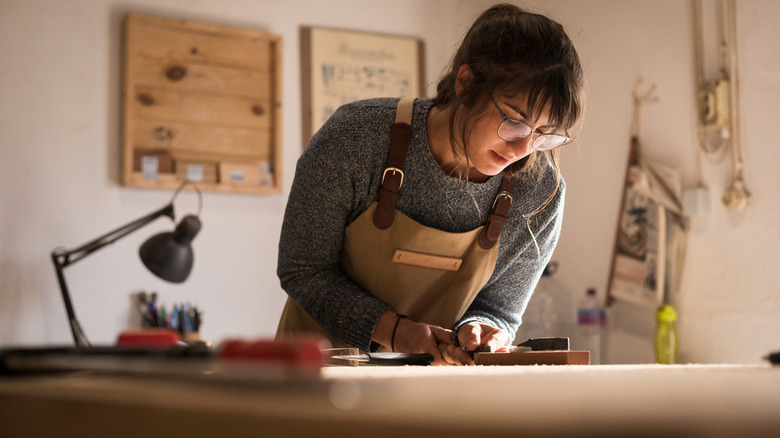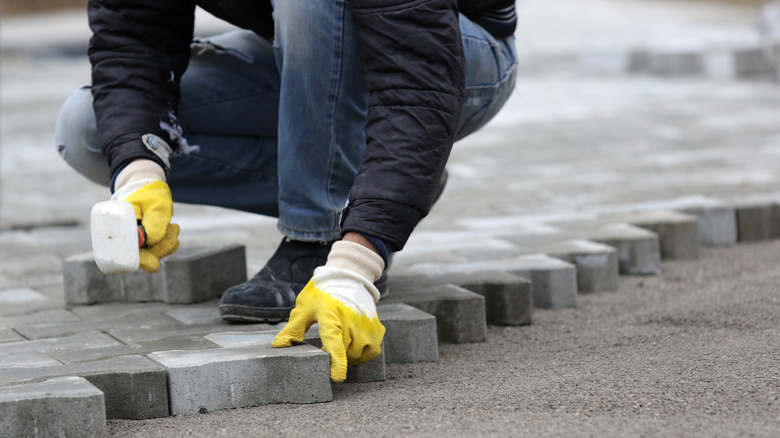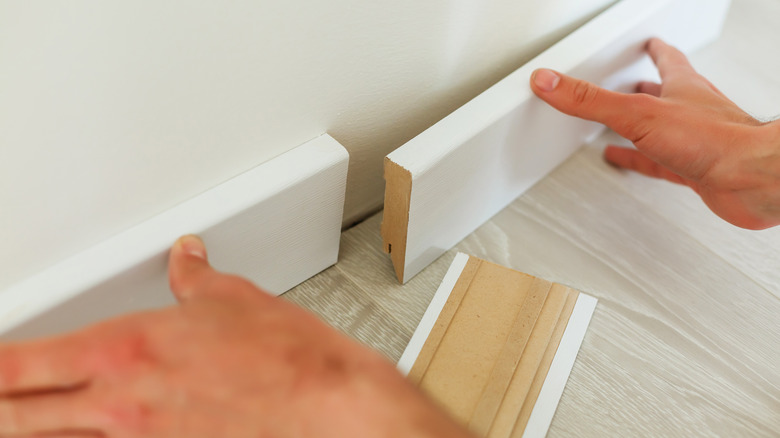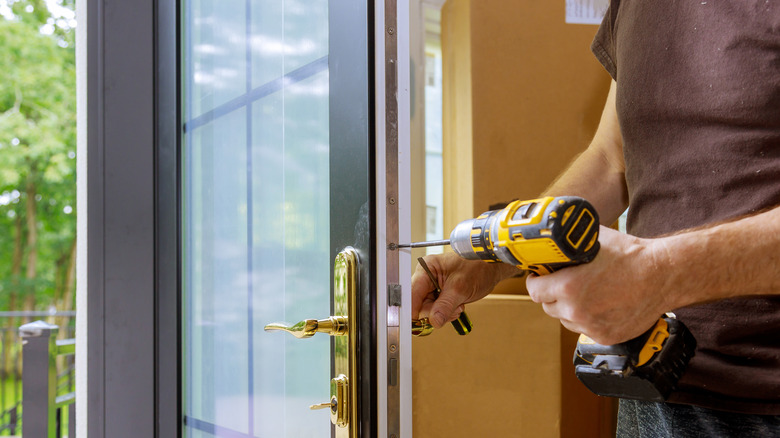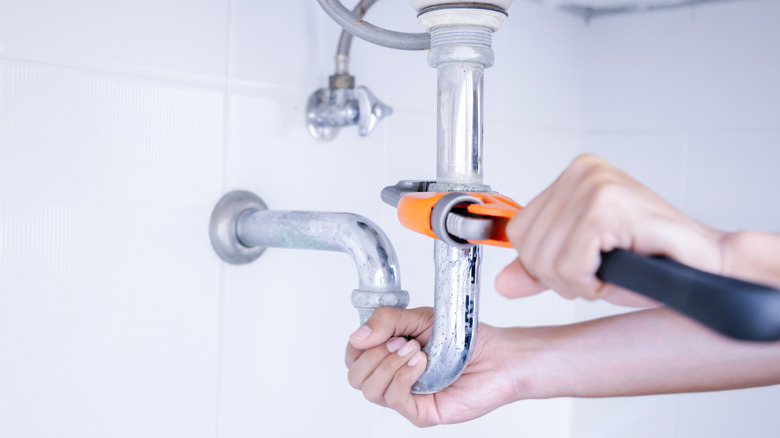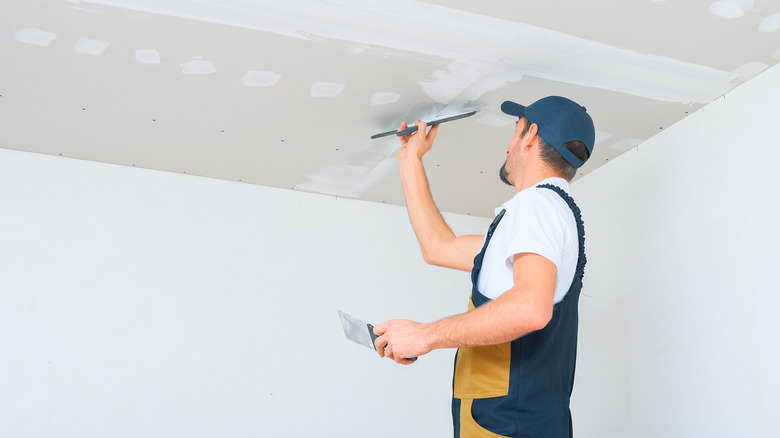Top 5 DIY Jobs Homeowners Most Often Screw Up
Unless you have an unlimited budget, there's a good chance you've embarked on at least one DIY project in the past. Trying your hand at DIY became even more popular during the pandemic, when so many people were spending huge amounts of time at home, leading to considerations of how they could spruce up their space a little. In fact, in a survey of 1,000 U.S. homeowners, a staggering 81% had undertaken some type of DIY project during the pandemic, with more than half tackling multiple projects, according to Angi.
As Comfy Living reports, many gain confidence through the abundance of tutorials and instructional videos available on platforms like YouTube, or gather inspiration through Instagram or Pinterest. However, there's a huge range of complexity when it comes to DIY projects. Some things, like splashing a fresh coat of paint on an accent wall, are relatively foolproof. Others that involve elements like electricity or plumbing can be a lot trickier.
So, how do you know when it's fine to attempt to DIY a job and how do you know when you should bring in an expert? In an exclusive interview with House Digest, Neil Platt, Director of Emerald Home Improvements, gave the inside scoop on the most common mistake-prone projects you may want to leave to the professionals.
Laying a new patio
If your backyard is a relatively blank slate with just grass and not much else, one of the first DIY projects that you may look to tackle is adding a patio. A patio can be a fantastic addition to your backyard both in terms of aesthetics and functionality, giving people a place to gather and offering a more stable surface to place your outdoor furniture.
However, just because it's an exterior project doesn't mean it's necessarily easier than building something indoors, a misconception that Platt sees often. He warns that "Laying a new patio might seem like an easy job, but if it's not done properly, it can cause all sorts of problems."
The issue for many DIYers is that they consider solely the surface of the patio without always putting enough thought into what's happening underneath it. "Make sure you compact the sub-base properly and use the correct type of mortar for your paving slabs. Otherwise, you might end up with an uneven and unstable patio that could start to sink over time," recommends Platt.
Whether you're using paving slabs, wood, or some other type of material, the tip remains the same — to ensure the longevity of your DIY patio, you want to put as much effort into preparing the foundation as you're putting into the patio itself.
Fitting new skirting boards
Installing skirting boards — known more commonly in the U.S. as baseboards — may seem like a relatively minor and uncomplicated DIY project to tackle. After all, you really just need to know the appropriate length to cut them to, and then affix them to the wall, right? According to Platt, they're a little more complex than you might initially think. He explains that "skirting boards are an important part of any room as they help to protect the walls from knocks and scuffs. But if you don't fit them correctly, they can start to come away from the wall and look unsightly."
If you're worried about your measuring skills and want to avoid potential disaster, it may be a project better left to the professionals. However, if you're determined to refresh your home with new baseboards yourself, you'll want to at least ensure that you're choosing the appropriate materials.
"Make sure you use the correct type of adhesive and screws, and that you pre-drill the holes before screwing them in," advises Platt. It may take a little more time in the beginning, but you'll get much more polished, professional results — and hopefully avoid any baseboards popping off the wall within a week or two.
Installing a new front door
Now, if you're just looking to give your front door a fresh coat of paint, that's a relatively straightforward DIY project. As long as you're patient and get the right type of paint, you should be able to produce a stellar result. The same goes for something like changing out or adding some decorative hardware to your front door.
However, if you're planning to completely swap out your existing door with a fresh new one for an entirely different look, you may want to think twice, as Platt flags it as a project that many DIYers struggle with. First of all, it's a high visibility and high impact area, which amplifies any mistakes. "Your front door is the first thing that visitors see when they come to your house, so it's important to make sure it looks presentable," explains Platt. "However, this is also one of the most common DIY jobs that people get wrong."
"If you don't install the door frame properly, it can cause all sorts of problems like drafts, leaks, and even security issues," Platt continues. That's right — beyond aesthetic considerations of how a sloppily installed door might look, this particular area of your home needs to be functional, and the consequences of getting it wrong could be serious. "It's best to leave this job to the professionals," Platt concludes.
Fixing your own plumbing
Two areas that many DIYers hesitate to touch are the water and the electricity, and for good reason. There are a lot of challenges that come along with handling projects that deal with either of these elements. However, particularly if you're refreshing or renovating a bathroom or kitchen, it can be tempting to take on a DIY project that involves plumbing, as so many key elements in these spaces require water.
"Unless you're a qualified plumber, it's best to leave any repair work to the experts. This is because it's very easy to make mistakes that can end up costing you a lot of money in the long run," advises Platt. "For example, if you don't seal a pipe correctly, it could lead to leaks which could cause extensive damage to your property. And if you use the wrong pipe size you could end up with burst pipes or inadequate water pressure."
Yes, you may be saving some money initially through DIY. However, if you end up needing to bring in a professional to fix a much bigger disaster down the line, it could end up costing double or triple what the original project would have.
Repairing the ceiling
Perhaps you see a crack in your ceiling that you think needs to be filled. Or, maybe there's a spot of what appears to be water damage or some type of stain that you want to remove. Whatever DIY project you have planned, if it's more complicated than splashing on a coat of paint and it involves your ceiling, you should proceed with extreme caution.
Any repairs to the ceiling are a scenario where it may be worth the extra money to call in a professional. "The ceiling is a delicate part of the house and if not repaired properly, it could cause a lot of damage," warns Platt. "It is made of light material that could easily give in to a person's weight, so it's important to be very careful when repairing it."
Moreover, Platt also explains that there's a lot going on beneath the surface, and the consequences of getting things wrong could be disastrous. He warns that "the ceiling harbors more than you see, from water pipes to electrical wires, so one wrong move could flood your house or start a fire."
